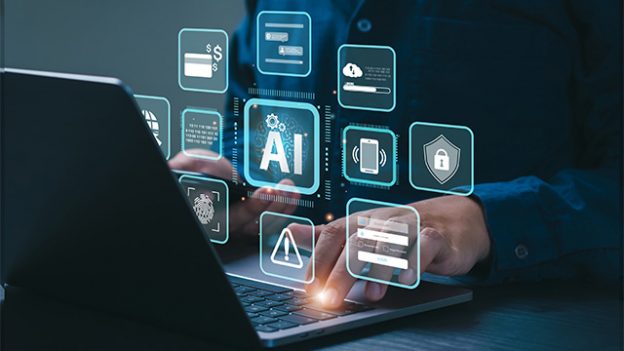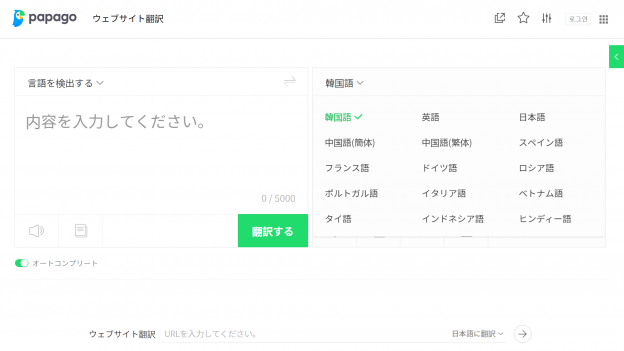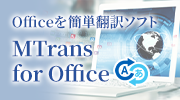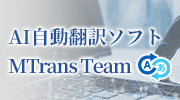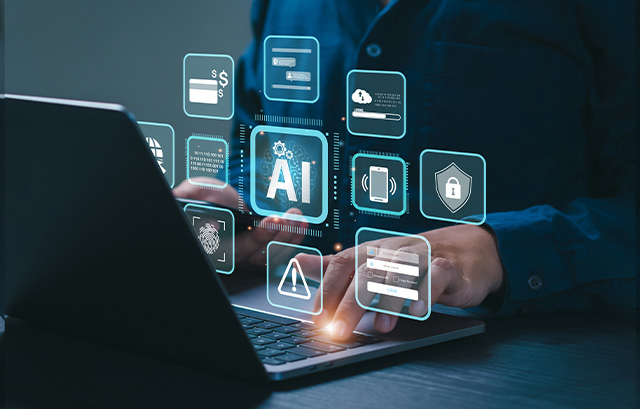
- Table of Contents
1. Services utilizing generative AI are emerging one after another! The potential for future applications is expanding.

What is Generative AI?
Generative AI is a type of artificial intelligence technology that can autonomously generate diverse content such as text, images, audio, and video. By learning from a large amount of existing data, it understands the patterns, rules, and relationships among the elements contained in that data, and can create new content based on them.
For example, text generation AI can learn from human-written text and generate natural sentences while understanding grammar rules and context. Image generation AI can learn the characteristics, composition, and color usage of objects from existing image data and create entirely new images. Additionally, voice and video generation AI operate on similar principles.
A distinctive feature of generative AI is its ability to produce creative outputs based on learned patterns, rather than merely duplicating or combining existing data. This opens up possibilities for its application in various fields such as art creation, content generation, product design, and entertainment. Additionally, it supports human creative work and plays a role in expanding the potential for new ideas and expressions.
Examples of Services Using Generative AI
ChatGPT, a representative example of natural language generation AI, has the ability to generate text in a conversational format with humans and is utilized in a wide range of applications such as writing, translation, and programming assistance.
Image generation AIs such as Midjourney, DALL-E, and Stable Diffusion can generate high-quality images from text prompts, enabling designers to expand their creativity and significantly reduce production time.
Video generation AI automatically creates video content from text input. It has the potential to streamline the production of marketing videos and social media content. Additionally, the process of adding new elements to or editing existing footage is also becoming automated.
Voice generation AI technology can reproduce human voices with high precision and is utilized in various applications such as narration production, virtual assistants, and voice guides. It has become possible to achieve more natural and rich voice communication, including multilingual support and control of emotional expression.
These generative AI technologies provide innovative solutions in their respective fields, contributing to the efficiency and quality improvement of creative work. As technology continues to evolve, it is expected that even more diverse applications will emerge in the future.
【Related Links】
>4 Examples of Machine Learning Implementation That 80% Feel the Benefits of Efficiency Improvement through AI Utilization.
2. What are the security risks of generative AI?

Risk of Secondary Use
The most concerning risk when using online generative AI services is the secondary use of input and output data. Many generative AI services reserve the right to use input and output data as training data for machine learning in their terms of service. This means that the data entered by users or the data generated may be stored and used as data for improving the performance of AI models or for developing new services. As a result, if sensitive information such as corporate confidential information, personal information, or copyright-protected content is input, there is a risk that this data may be output to another user. Before using AI services, it is essential to check the terms of service and choose services or contract plans that explicitly state that input and output data will not be reused.
For more information on the data leakage risks associated with text generation AI and methods to prevent secondary use, please see the blog article below.
>Will confidentiality be maintained with ChatGPT, Copilot, Gemini, and Claude?
Risks associated with data remaining on the service provider's server
Among the security risks of generative AI, a particularly important concern is the risk related to the residual data on the service provider's servers.
When using generative AI services, the prompts and data entered by users are sent to and processed by the service provider's servers. This data may include confidential corporate information and personal information, and the continued storage of such data on the servers can lead to various security risks.
Specific risks include information leakage due to cyber attacks from external sources. There is a possibility that stored data may be accessed illegally due to hacking or malware infections. Additionally, human errors by employees of the service provider and intentional information theft due to internal misconduct also pose significant risks.
To address these risks, it is important to thoroughly review the terms of contracts regarding data handling and privacy policies, and to take measures such as requesting additional contracts to prevent data retention or data deletion requests as necessary.
Risk of Eavesdropping During Data Transmission
There is a risk that important information may be intercepted by third parties during data communication between the generative AI system and the user. In particular, the prompts entered by the user and the responses generated by the AI may contain confidential information or personal data, and if these are intercepted during transmission, it could lead to serious information leaks.
This risk primarily manifests through the use of unencrypted communication channels, the adoption of weak encryption protocols, and techniques such as Man-in-the-Middle attacks. For example, using insecure Wi-Fi environments or web services that do not implement proper SSL/TLS certificates increases the likelihood of communication content being intercepted.
To address such risks, it is important to use a reliable network environment, implement strong encryption protocols (such as TLS 1.3), regularly monitor communication paths, and establish secure authentication systems.
The risk of employees entering confidential information and personal data when using tools within the company
As mentioned earlier, input and output data may be used to improve AI models depending on the generative AI services and contract plans. However, there is a risk that employees may use the services without being aware of this and inadvertently input confidential or personal information.
To address this risk, continuous employee training is essential. Specifically, it is necessary to establish clear guidelines regarding the range of available tools, the types of information that should not be input, and the data handling policies for each tool, as well as to conduct regular training sessions. Additionally, it is important to raise employee awareness by specifically explaining actual incident cases and the impact of confidential information leaks.
Account Takeover Risk
Account takeover of generative AI services poses a serious security risk that can lead to the leakage of personal information and business secrets. In particular, with generative AI services like ChatGPT, there is a high likelihood that the conversation history exchanged between users and the AI contains confidential information, and the impact could be significant if an account is compromised. For example, confidential information such as product development plans, financial information, and customer data may be included, and if this information falls into the hands of competitors or malicious third parties, it could result in severe damage.
As a specific defense measure against such risks, the introduction of multi-factor authentication (MFA) is recommended. By using authentication codes via smartphone apps or SMS in addition to passwords, the security of accounts can be significantly improved. Additionally, for companies, the implementation of a Single Sign-On (SSO) system is also effective. By utilizing SSO, integrated access management within the organization becomes possible, allowing for the deactivation of access rights during employee departures and centralized management of access logs.
3. How to Address Security Risks of Generative AI

Consideration of whether to allow internal use of generative AI services and tools
When companies consider the internal use of generative AI services and tools, a comprehensive risk assessment is essential. Particularly from the perspective of information security, it is necessary to examine the risks associated with handling confidential information and personal data, verify the storage locations of data and terms of use, and scrutinize the adequacy of the security measures of AI providers.
Additionally, from a legal perspective, it is important to verify issues related to copyright, the ownership of rights for AI-generated content, and compliance with various regulations. In particular, when considering industry-specific regulations or global usage, it is necessary to also take into account the legal regulations of each country.
From the perspective of purpose and operational efficiency, it is necessary to identify specific use cases and analyze the cost-effectiveness of which business processes are effective for utilizing AI tools.
Based on these considerations, we will determine the approval for the use of generative AI services.
Establish usage rules and security guidelines, employee training if permitted
If you allow the use of generative AI services, it is recommended to establish specific usage rules and security guidelines after obtaining approval from management. These rules and guidelines should clearly define the tools that are permitted for use, the scope of use, prohibitions, security measures, and monitoring methods. Additionally, it is also important to consider the development of educational and training programs to improve employees' AI literacy.
Furthermore, it is important to establish a regular process for measuring and reviewing effectiveness after implementation, continuously addressing new risks and challenges, and exploring more effective utilization methods. In the rapidly evolving field of generative AI, ensuring the smooth operation of this PDCA cycle is key to safe and effective utilization.
Assessment of Security Risks Before Using the Service
Before using online services, it is important to conduct an appropriate security risk assessment. It is essential to scrutinize the service provider's terms of use and privacy policy regarding the handling of input and output data. In particular, check the clauses related to the secondary use of user data and provision to third parties, and choose tools that do not allow for the use of data for purposes other than intended.
Free version services tend to utilize user data for monetization and often have limited security features, so they should be avoided for critical business use. Instead, considering the use of a paid version that offers clear security guarantees and comprehensive support can enable safer service utilization. Additionally, even for paid versions, there may be different terms of use for general consumers and businesses. It is necessary to review all terms of use and select a service and contract plan that is suitable for your business.
Access Control for Services
In access control for generative AI services, it is necessary to not trust any access based on the principles of zero trust security and to always perform verification. This means treating access from within the company the same as access from outside.
In strict identity verification, the implementation of two-factor authentication (2FA) / multi-factor authentication (MFA) is essential. By combining multiple authentication elements such as passwords, biometric authentication, physical tokens, and one-time passwords, the risk of impersonation is minimized.
We will thoroughly implement the principle of least privilege by granting only the minimum necessary permissions. Appropriate access rights will be set according to the user's role and responsibilities, and regular reviews and audits of permissions will be conducted. Additionally, continuous monitoring and analysis of access logs will be performed to enable early detection and response to unauthorized access.
4. Examples of Security Measures for AI Translation Tools

What is the AI translation tool MTrans for Office?
MTrans for Office is an AI translation and AI writing assistance software developed by Human Science. It adds AI translation and AI writing assistance features to Microsoft Office applications such as Word, Excel, PowerPoint, and Outlook. By utilizing MTrans for Office, the creation of business documents and email exchanges are significantly streamlined, enhancing productivity in daily operations.
Features of MTrans for Office
The translation feature of MTrans for Office allows you to use translation engines from DeepL, Google, Microsoft, and OpenAI. In particular, by utilizing the OpenAI engine, which is a generative AI, you can customize the translated text according to the translation instructions. It is possible to add expressions that are not present in the original text. For example, you can refine expressions for marketing purposes. This enables users to obtain the most suitable translation based on context and usage.
The term registration feature is also convenient. By registering proper nouns and technical terms such as product names, service names, and brand names, consistent terminology will be used during translation, reducing the need for post-translation revisions. This is a significant advantage, especially in environments where specialized fields or company-specific terminology are frequently used.
By using the AI writing assistance feature, you can utilize OpenAI's generative AI, such as GPT-4o and o1-mini, to create document drafts, transcribe English from Japanese summaries, proofread text, and enhance expressions. In addition to pre-prepared prompts that are convenient for writing, you can also prepare your own unique prompts.
MTrans for Office is very economical in terms of cost. Despite its high functionality, it offers excellent cost performance and is used by a wide range of customers, regardless of the size of the company.
For more details, please see the MTrans for Office product page below.
>Easy translation software MTrans for Office
Security of MTrans for Office
MTrans for Office connects to services like DeepL, Google, Microsoft, and OpenAI via API. Unlike general online translation tools and AI services, the data being translated is not reused, allowing you to use it safely even for translating or generating confidential documents. Additionally, all communications and data are encrypted. Communication is conducted via SSL, and all uploaded data and information are encrypted, ensuring that third parties cannot access or tamper with the data.
MTrans for Office supports SSO. Users can access multiple services with a single login, enhancing both convenience and security. Administrators can centralize user management and maintain proper control over access permissions. Additionally, it supports IP restrictions, allowing access only from the company's network.
5. Summary
Generative AI is a technology that autonomously generates diverse content such as text, images, audio, and video, and its application is expected in many fields including content creation and art production. However, the use of generative AI also comes with security risks, particularly concerns about secondary use of data, data retention on servers, information leakage during communication, and account takeovers. To address these risks, it is important to review terms of use, establish security guidelines, provide employee training, and implement multi-factor authentication. When companies allow the use of generative AI, they need to conduct a comprehensive risk assessment and take appropriate security measures.
At Human Science, we offer the automatic translation software MTrans for Office, which can utilize translation engines from DeepL, Google, Microsoft, and OpenAI. The latter can not only be used as a translation engine, but it can also summarize, rewrite, and proofread text, depending on the prompts. Try out MTrans for Office with our 14-day free trial offer. Please contact us for more information.
Features of MTrans for Office
- ① No limit on the number of files that can be translated or on the glossary, with a flat-rate system
- ② Translate with one click from Office products!
- 3. API connection ensures security
- For customers who want further enhancement, we also offer SSO, IP restrictions, and more. - ④ Support in Japanese by Japanese companies
・Support for security check sheets is also available
・Payment via bank transfer is available
MTrans for Office is an easy-to-use translation software for Office.

